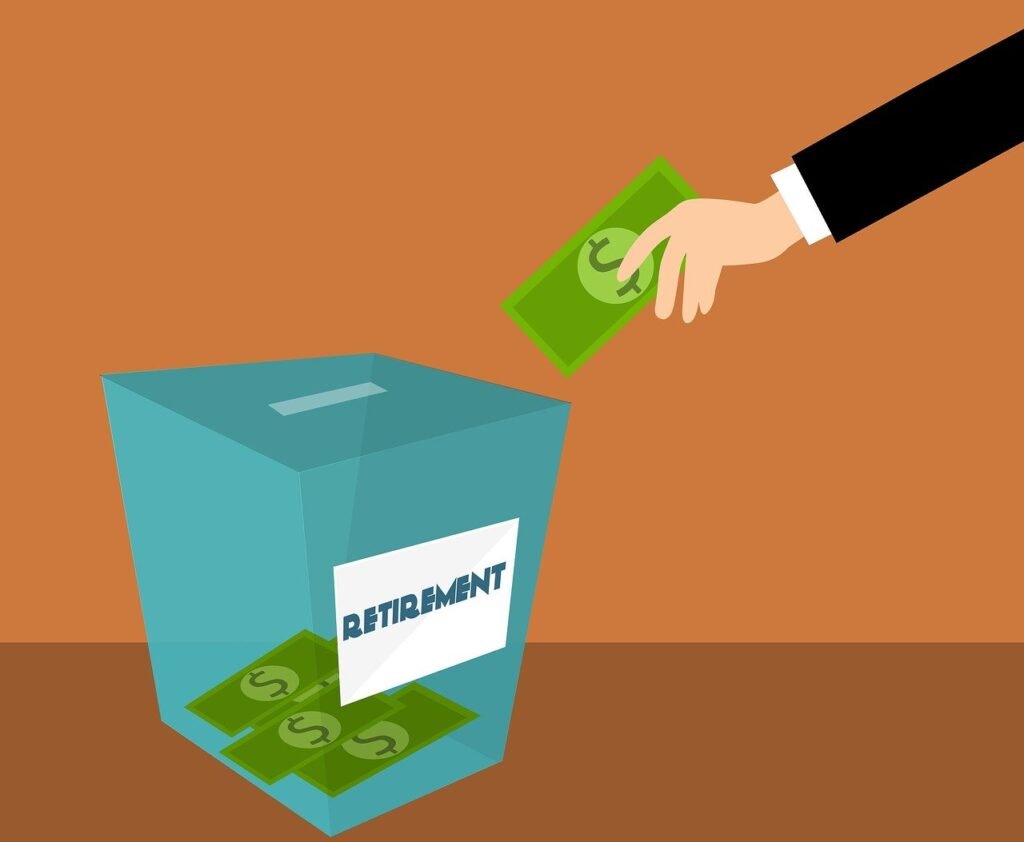Have you ever found yourself wondering which retirement savings option is better for you: a Roth IRA or a 401(k)? Navigating through your options can feel overwhelming, especially when you’re planning for the future. But don’t worry; you’re not alone. Many people find themselves caught between these two popular retirement plans, trying to decipher which one might suit their needs best. In this article, we will break down the differences, benefits, and considerations of both, so by the end, you’ll have the knowledge to make an informed decision for your financial future.
Understanding the Basics
Before diving into the comparisons, it’s essential that you grasp the foundational concepts of both Roth IRAs and 401(k)s. Each has its unique features, advantages, and potential drawbacks.
What is a Roth IRA?
A Roth IRA, or Individual Retirement Account, is a retirement savings plan that provides you tax-free growth and tax-free withdrawals in retirement. Unlike traditional IRAs, Roth IRAs are funded with after-tax dollars, meaning you don’t get an upfront tax deduction. You do, however, enjoy tax-free compounding, which can be beneficial in the long term.
Key Features of a Roth IRA:
- After-Tax Contributions: Contributions to your Roth IRA are made with dollars that have already been taxed.
- Tax-Free Withdrawals: Upon reaching retirement age, typically 59½, you can withdraw your contributions and earnings tax-free, provided the account has been open for at least five years.
- Contribution Limits: The contribution limit is adjusted annually and is usually subject to income phase-outs.
- No Required Minimum Distributions (RMDs): Unlike other retirement accounts, Roth IRAs do not mandate withdrawals during your lifetime.
What is a 401(k)?
A 401(k) is an employer-sponsored retirement savings plan that is often funded through pre-tax contributions via payroll deductions. Employers may offer a matching contribution, which can significantly boost your retirement savings. Contributions reduce your taxable income, helping lower your current tax bill.
Key Features of a 401(k):
- Pre-Tax Contributions: Contributions are typically made with pre-tax dollars, reducing your taxable income for the year.
- Employer Match: Many employers offer matching contributions up to a certain percentage of your salary, essentially providing “free” money for your retirement.
- Higher Contribution Limits: 401(k) plans generally have higher annual contribution limits compared to IRAs.
- Required Minimum Distributions (RMDs): Starting at age 73, you must begin taking distributions from your 401(k).
Comparing Roth IRA and 401(k)
Now that you have a fundamental understanding of both options, let’s delve into the specific differences and similarities that might influence your decision.
Contribution Limits Comparison
When planning your retirement savings, knowing the annual contribution limits of each option helps in strategizing your savings goals.
| Plan Type | Contribution Limit (2023) | Catch-Up Contribution (Age 50+) |
|---|---|---|
| Roth IRA | $6,500 | Additional $1,000 |
| 401(k) | $22,500 | Additional $7,500 |
While the 401(k) offers the potential to save more each year, both plans can be strategically used to maximize your retirement savings.
Tax Implications
Tax considerations play a vital role in shaping your retirement savings strategy. Understanding how each option affects your tax situation both now and in the future is crucial.
- Roth IRA: Since contributions are made with after-tax dollars, you won’t receive a tax deduction now. However, withdrawals in retirement are tax-free, which can be advantageous if you anticipate being in a higher tax bracket later.
- 401(k): Contributions reduce your taxable income for the year you make them, potentially saving you money on taxes right now. However, withdrawals in retirement will be taxed at your ordinary income rate.
Investment Options
Both a Roth IRA and a 401(k) offer various investment options, but the degree of choice you have can differ significantly.
- Roth IRA: Typically allows for more flexibility and a broader range of investment options, including stocks, bonds, exchange-traded funds (ETFs), and mutual funds. You usually open a Roth IRA through a financial institution that grants you these investment choices.
- 401(k): Investment options are dictated by the plan offered through your employer. While there may be limitations compared to an IRA, employer plans often curate diversified fund options, including target-date funds.

This image is property of images.unsplash.com.
Benefits of a Roth IRA
Examining the distinct advantages of a Roth IRA can highlight scenarios where it might best suit your financial plans and lifestyle.
Tax-Free Income in Retirement
One of the most compelling benefits of a Roth IRA is the ability to withdraw money tax-free during retirement. This feature is particularly beneficial if you expect to be in a higher tax bracket when you retire.
Flexibility and Control
Roth IRAs generally allow more flexibility in choosing investments tailored to your personal risk tolerance and financial goals. Moreover, without required minimum distributions, you can let your money grow for as long as you desire, providing additional financial security.
Accessibility
Unlike many retirement plans, contributions to a Roth IRA can be withdrawn penalty-free at any time. Note that this applies only to contributions, not earnings, which provides a cushion for unexpected financial needs.
Benefits of a 401(k)
Exploring the benefits of a 401(k) can clarify when and why it might be the right choice for you. There are numerous advantages tied closely to its relationship with employers.
Employer Match: Free Money
If your employer offers a matching contribution, this is one of the most significant benefits of a 401(k). Take full advantage of employer matching to help you save more efficiently for retirement.
Higher Contribution Limits
The higher contribution limits make a 401(k) particularly appealing for those looking to maximize their retirement savings. These larger contributions can significantly bolster your retirement nest egg over time.
Payroll Deductions
Since contributions are automatically deducted from your paycheck, saving for retirement becomes a seamless process. The convenience of automated savings ensures consistent contributions.

This image is property of images.unsplash.com.
Important Considerations
When contemplating either a Roth IRA or a 401(k), several factors warrant close attention. These considerations can guide you toward the strategy that best aligns with your current situation and future goals.
Income Level and Tax Bracket
Current and projected future income levels can heavily influence whether a Roth IRA or 401(k) is ideal.
- If you anticipate being in a higher tax bracket upon retirement, a Roth IRA might be favorable.
- Conversely, if you prefer to minimize current taxes, a 401(k) could provide more immediate benefits.
Access to Employer-Sponsored Plans
Your access to a 401(k) depends on employer participation. Not all jobs offer a 401(k), in which case a Roth IRA becomes a necessary or supplemental option.
Penalties and Fees
Both plans come with potential penalties and fees, especially for early withdrawals or failure to follow distribution rules. It’s necessary to fully understand these aspects to avoid unexpected costs.
Strategies for Using Both
You might find that utilizing both a Roth IRA and a 401(k) in tandem is the optimal strategy for your retirement goals. By leveraging the unique benefits of each, you can maximize your savings comprehensively.
Diversification of Tax Advantages
By contributing to both, you can spread out your tax advantages—enjoying the immediate tax benefit from a 401(k) and future tax-free withdrawals from a Roth IRA. This approach creates a balanced retirement income strategy.
Maximizing Employer Contributions
Maximize your 401(k) contribution at least to the point where you receive the full employer match. This ensures you aren’t leaving free money on the table, then use a Roth IRA for additional flexible savings.
Adapt to Life Changes
Life events such as a change in employment, fluctuating income levels, or financial goals may necessitate adjustments to your retirement strategy. Using both accounts allows for more adaptive financial planning.

This image is property of images.unsplash.com.
Conclusion
Navigating between a Roth IRA and a 401(k) doesn’t have to be complicated. By understanding each plan’s unique features and benefits, you can choose the one that aligns with your personal financial goals and circumstances. Consider your current and future tax situations, your employer’s offerings, and how you envision your retirement life. Whether you’re choosing one plan or both, the most critical step you can take is to start saving for your future today. Embrace the knowledge you’ve gained here to pave your way faithfully into a secure and fulfilling retirement.










































































